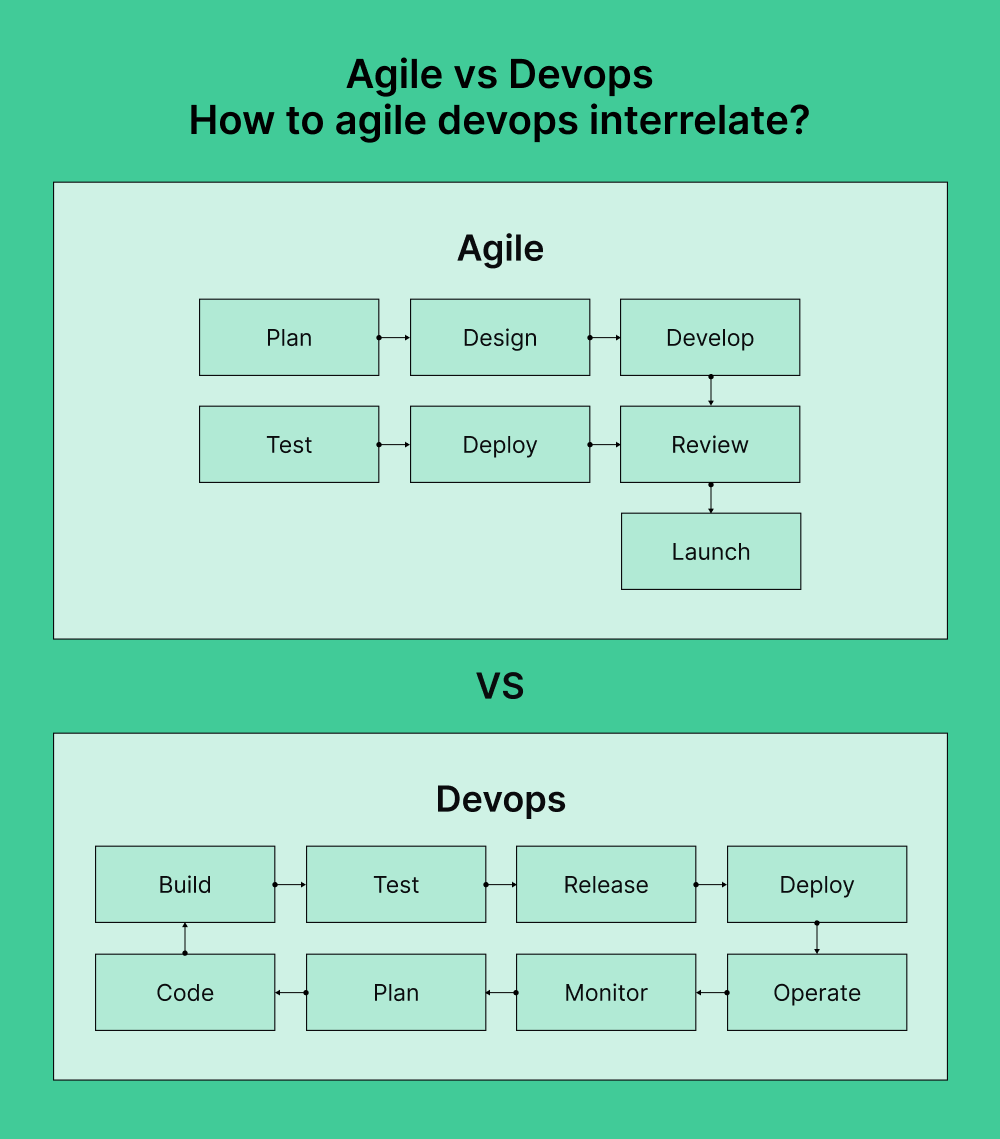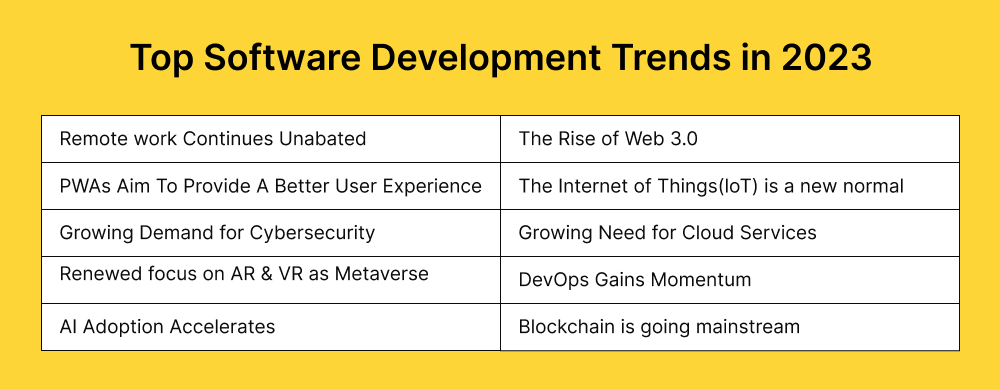9 Key challenges of software testing to keep in mind
"Quality is more important than quantity. One home run is much better than two doubles." Steve Jobs' insight resonates deeply today. In an industry where the majority of software projects run over schedule, the role of effective testing has never been more important.
In this exploration of software testing challenges, we're not just pinpointing problems but offering real, workable solutions. Our goal is to turn these challenges into chances to innovate and excel, transforming how we approach software testing into something better and more effective.
We can help you simplify your software testing process while keeping it aligned with your business goals
9 Challenges of software testing and their solutions
Let's take a closer look at software testing. It's got its fair share of tough spots, and understanding these nine main challenges can help us see what testers go through and actionable solutions to implement.
1. Challenge: Rapid technological advancements
The technology sector constantly evolves, frequently introducing new tools, programming languages, and frameworks. This rapid pace of change demands that software testers continuously update their skills and testing approaches. If they fail to keep pace, their testing methods risk becoming outdated, potentially leading to ineffective testing and overlooked issues in new software versions.

Solution
Overcoming this challenge demands a dedication to ongoing education and adaptability. Essential strategies involve:
- Engaging in frequent training sessions.
- Participating in industry conferences.
- Joining online tech forums and communities.
Equally important is cultivating a culture of perpetual learning within testing teams. Testers should consistently pursue new knowledge and keep abreast of technological progress.
Such an active stance elevates testing standards and fosters personal and career development in an ever-evolving tech environment.
2. Challenge: Complex software architectures
Modern software systems frequently consist of interconnected parts, such as various APIs, microservices, and third-party integrations. This complexity poses a challenge in achieving thorough test coverage and fully understanding how different components interact and affect each other.
Solution
Tackling this complexity requires adopting modular testing methods and using sophisticated frameworks.
- Modular testing breaks down the software into smaller, manageable segments, each individually tested before being combined into the whole system.
- Advanced testing frameworks tailored for complex architectures significantly boost testing efficiency. These frameworks are typically equipped for integration and automated regression testing and adeptly handle dependencies within software components.
Pro tip
Utilize Global App Testing's full suite of testing capabilities, including functional, usability, and look-and-feel testing, to thoroughly evaluate complex software systems and ensure that all aspects of the architecture are effectively tested.
3. Challenge: Integrating testing with Agile and DevOps
Incorporating testing into Agile and DevOps practices brings unique challenges, especially in maintaining high-quality standards. These methodologies focus on quick development and frequent releases, which often result in shorter periods available for testing. This rapid pace can compromise the depth of testing, increasing the likelihood of bugs and quality issues in the final product.
Furthermore, the continuous integration and delivery model, which is fundamental to Agile and DevOps methodologies, necessitates integrating testing seamlessly into the development lifecycle. This integration represents a significant change from traditional testing approaches and can pose challenges.

Solution
To effectively blend testing into Agile and DevOps frameworks, adopting strategies that improve efficiency without compromising quality is essential.
1. One key strategy is Continuous Testing, which involves running automated tests as part of the continuous integration process. This approach allows for immediate validation of new changes, helping to prevent the build-up of bugs.
2. Another important strategy is Shift-Left Testing, where tests are conducted early in the development cycle, which helps detect and resolve issues sooner, thus avoiding delays later on.
3. Additionally, cultivating a culture of quality where developers and testers work closely together ensures that maintaining quality is a collective responsibility.
Pro tip
Global App Testing offers an integrated, powerful platform that simplifies and accelerates the testing process for businesses. This platform enables clients to launch, receive, and manage tests with ease, facilitating quicker and more efficient testing processes.
Key features of the platform include:
- Full bug environment: Providing comprehensive details on discovered bugs.
- Video evidence: Offering visual documentation for better understanding and analysis.
- Multiple tester confirmation: Ensuring reliability through cross-verification by several testers.
- Integration with tools: Seamless export capabilities to platforms like Jira and TestRail.
- Versatile testing stages: From design to production, accommodating various phases of software development
%20(1).png?width=1000&height=666&name=Frame%20277%20(2)%20(1).png)
4. Challenge: Effective communication in distributed teams
Effective communication is a significant hurdle in remote or widely distributed teams, especially within software testing.
The mix of different time zones and cultural backgrounds and the lack of in-person interactions often lead to misunderstandings, delayed decision-making, and unclear project objectives and testing requirements.
These communication barriers can cause inconsistencies in the testing processes and outcomes, potentially diminishing the overall quality of the software.
Solution
To enhance communication in distributed teams, you can adopt specific tools and practices that foster teamwork and dialogue:
- Use Slack, Microsoft Teams, or Asana for real-time conversations and efficient information exchange.
- Conduct Zoom or Google Meet video meetings to maintain personal connections and ensure everyone is aligned with project objectives and strategies.
- Implement agile methodologies like Scrum or Kanban. This includes daily stand-ups and sprint retrospectives for continuous communication and swift issue resolution.
- Use tools like Global App Testing to document testing processes and results, making crucial information accessible to all team members, regardless of location.
- Define clear expectations, roles, and responsibilities. Foster a culture that values open feedback to enhance communication in remote teams significantly.
5. Challenge: Resource and budget constraints
Resource and budget limitations present significant challenges in software testing. These constraints often mean fewer staff members, limited access to advanced testing tools, and restricted time for comprehensive testing.
Such limitations can lead to a reduced scope of testing, increasing the risk of missing critical bugs and vulnerabilities, particularly in complex or large-scale projects. Budget constraints may also limit the ability to conduct extensive automated testing, load testing, and other specialized tests that are vital for assuring software quality.
Solution
To effectively manage testing within these conditions, consider the following strategies:
- Focus on testing the most critical areas of the software first by prioritizing test cases based on risk and potential impact.
- Employ open-source testing tools to cut costs while maintaining robust testing capabilities.
- Combine manual and automated testing in a cost-effective manner. Use automation for routine and regression tasks, allowing manual testers to concentrate on exploratory and complex testing scenarios.
- Implement a 'shift-left' approach, where testing starts early in development.
- Take advantage of cloud-based testing environments to lower infrastructure costs and gain scalability.
Pro tip
Balance automated and exploratory testing with Global App Testing's services to optimize resources. This approach can help manage budget constraints while achieving comprehensive testing coverage.
6. Challenge: Security and compliance testing
In today's digital age, security testing and compliance with regulatory standards are crucial aspects of software testing. With the increase in cyber threats and strict data protection laws like GDPR and HIPAA, it is important for software to not only be secure but also compliant. Neglecting these elements can lead to severe risks such as data breaches, legal consequences, and loss of user trust.
Solution
Best practices that you can integrate:
- A 'shift-left' approach aids in early vulnerability detection, reducing the cost and effort needed for later fixes.
- Keep the testing team informed about the latest security threats and compliance requirements.
- Implement tools such as Static Application Security Testing (SAST) and Dynamic Application
Security Testing (DAST) to identify a broad spectrum of vulnerabilities efficiently. - Perform thorough penetration testing, which mimics cyberattacks, to discover weaknesses in security defenses.
- Regularly incorporate compliance checks into the testing process to ensure compliance with legal and regulatory standards.
- Keep detailed records of all security tests and compliance verifications. This documentation is crucial for audit purposes and the ongoing enhancement of security measures.
Pro tip
Employ Global App Testing's local and functional testing in various countries to ensure compliance with international standards and security regulations. The global reach is particularly beneficial for adhering to diverse regulatory requirements.
Additionally, as a testament to the commitment to data security, the company is ISO 27001 certified. This certification reflects GAT's dedication to maintaining high data protection and security standards.
7. Challenge: Managing test data and environments
In software testing, managing and maintaining quality test data and environments are critical yet challenging. Test environments must closely mimic real-world scenarios to yield reliable results, but setting up and maintaining these environments is complex and often requires significant resources. Key challenges include:
- Ensuring the diversity of test data to cover various scenarios.
- Keeping this data current.
- Maintaining stable environments.
- Securely handling sensitive data, like personal information, in compliance with privacy standards.
- Test environments and data can become inconsistent and unreliable without effective management, potentially leading to ineffective testing and undetected bugs in the final product.
Solution
Here are some steps to follow:
- Use tools that automate test environments' setup, maintenance, and dismantling.
- Apply data masking and anonymization techniques, particularly for sensitive data, to meet privacy standards while preserving the integrity of tests.
- Employ tools for generating synthetic data, which allow for creating realistic and diverse test data sets that simulate a range of testing scenarios, reducing reliance on actual production
data. - Develop a comprehensive framework for data governance, encompassing policies and procedures for managing test data lifecycle.
- Continually update and adjust test environments to mirror changes in production environments, maintaining the relevance of tests.
8. Challenge: Ensuring test coverage and effectiveness
Achieving comprehensive test coverage is a critical yet challenging aspect of software testing. Comprehensive coverage ensures that all application parts, including all features, code branches, interfaces, and integrations, are tested under various scenarios.
The challenge arises from the complexity and scope of modern software applications, which often include numerous functionalities and integrations.
Additionally, evolving features and frequent updates can make maintaining up-to-date and thorough test coverage difficult. Inadequate test coverage can lead to undetected bugs and issues, negatively impacting the software's quality and reliability.
Solution
To enhance test coverage and effectiveness, you can follow the subsequent strategies and metrics:
- Prioritize test cases based on criticality of application features, risk assessment, and bug history.
- Automate repetitive and regression tests to save time and resources, allowing testers to focus on more complex test scenarios and new features.
- Utilize code coverage tools to identify untested parts of the codebase. Strive for a high percentage of code coverage, but understand that 100% code coverage does not always equate to 100% functionality testing.
- Implement critical metrics such as defect density, test pass/fail rates, and requirement coverage to assess the effectiveness of the testing efforts.
- Integrate testing into the continuous integration (CI) pipeline to ensure ongoing assessment of the application's health with each code commit.
- Encourage exploratory testing to uncover issues that structured tests might miss.
- Establish feedback loops with developers, users, and stakeholders to refine test cases and coverage based on the feedback received.
- Continuously review and update test cases to align with new features and changes in user requirements.
Pro tip
Utilize GAT’s scripted and exploratory tests, along with advanced targeting controls, to ensure comprehensive test coverage and effectiveness. This approach helps in thoroughly assessing all aspects of the software.
9. Challenge: Keeping up with changing user expectations
Adapting to evolving user expectations and market demands is a significant challenge in software testing. Users increasingly expect intuitive, seamless, and feature-rich applications. Failing to meet these expectations can result in decreased user satisfaction and engagement, impacting the product's success in the market.

Solution
To stay aligned with user needs through continuous testing, consider the following strategies:
- Regularly gather and analyze user feedback from various channels such as social media, user forums, and direct customer feedback. Incorporate this feedback into the testing process to ensure that user concerns and suggestions are addressed.
- Adopt an Agile testing approach, which allows for frequent reassessment of the testing strategy based on evolving requirements and user feedback. Agile methodologies enable quicker adaptation to changes, ensuring that the product remains relevant to user needs.
- Conduct regular usability testing sessions to assess how real users interact with the application. This helps identify any usability issues that might not be evident during functional testing.
- Implement beta testing programs where a subset of real users can test new features before a full rollout. This provides valuable insights into user acceptance and experience.
- Stay informed about the latest trends and advancements in technology and user experience design. Regularly review competitor products and industry benchmarks to understand market standards and expectations.
- Utilize test automation for regression testing to ensure that new updates do not adversely affect existing functionalities. This allows for more frequent releases and faster response to user needs.
- Regularly conduct performance and load testing to ensure that the application performs well under various conditions. This is crucial for maintaining a positive user experience, especially for high-traffic applications.
- Ensure that the application provides a consistent experience across different platforms and browsers, catering to a diverse user base.
What can Global App Testing do for your software?
The challenges in software testing, from adapting to rapid technological changes to ensuring comprehensive test coverage, reflect the industry's dynamic nature.
At GAT, we have developed a comprehensive suite of testing capabilities to support the evolving needs of enterprises. Our services ensure that your product works correctly, meets user expectations, and functions flawlessly across all operational environments.
Our testing services cover:
- Functional bugs: Identifying and resolving operational issues.
- Specification adherence: Ensuring the product aligns with its outlined specifications.
- Usability testing: Assessing user-friendliness and interface navigation.
- Look-and-feel testing: Evaluating aesthetic and interactive elements.
- Language accuracy: Checking for linguistic correctness in different locales.
To further empower our clients, we provide best-in-class research resources. We've created guides, webinars, and reports to assist our customers in researching and implementing best practices in software testing. These educational materials are crafted to keep our clients informed and at the forefront of software testing methodologies and trends.
Ready to elevate your software testing process?
Contact us at Global App Testing today.
We can help you to effectively test your software and keep it aligned to your business goals
FAQ
How to handle resource and budget constraints in testing?
Prioritize testing areas based on risk, utilize open-source testing tools, balance manual and automated testing, adopt shift-left testing, and leverage cloud-based environments for cost-effective testing.
How can testing adapt to changing user expectations?
Regularly gather and analyze user feedback, adopt an agile testing approach, conduct usability testing, implement beta testing programs, stay informed about technology trends, and conduct performance and load testing.
Keep learning
5 UserTesting alternatives to consider using in 2025
5 Testbirds Alternatives to Consider in 2025
5 Agile testing tools to improve your development in 2025

%20(1).png)